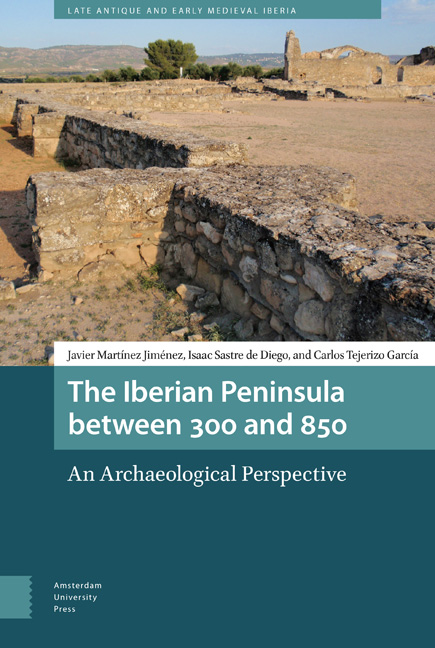Book contents
- Frontmatter
- Contents
- List of Figures
- Acknowledgements
- Preliminary notes
- Preface
- Introduction: An archaeological perspective on the Iberian peninsula between Rome and the Middle Ages
- Part 1 The Late Roman period
- Part 2 The post-Roman period
- Part 3 The Early Middle Ages
- Appendix 1 Site reference table
- Appendix 2 Maps
- Appendix 3 Lists of rulers
- Abbreviations
- Bibliography
- Index
9 - Conclusions: From the collapse of the Roman Empire to a Brave New World
Published online by Cambridge University Press: 10 December 2020
- Frontmatter
- Contents
- List of Figures
- Acknowledgements
- Preliminary notes
- Preface
- Introduction: An archaeological perspective on the Iberian peninsula between Rome and the Middle Ages
- Part 1 The Late Roman period
- Part 2 The post-Roman period
- Part 3 The Early Middle Ages
- Appendix 1 Site reference table
- Appendix 2 Maps
- Appendix 3 Lists of rulers
- Abbreviations
- Bibliography
- Index
Summary
It is not very extreme to assume that a person who lived around the year 300 was radically different from someone who lived in the same place in the year 800 (and not just in the Iberian peninsula). We can hypothetically picture their encounter in an imagined scenario. They would probably not be capable to communicate, not only because the language they would speak in would be different, but also because their mentalities, political economies, and perceptions of their circumstances would be strange to each other. If we could ask them which place was the most important in their world, we would obtain quite different answers. The first one would have quickly named Rome; Rome not just as a physical entity but also as a supra-idea of power and order. However, the answer to this question would not be so easy for our ninth century person; he could say Rome, or Jerusalem, if he was a Christian, or, if Muslim, Medina and Mecca. In political terms, the Early Medieval individual could give us several answers: Córdoba, the capital of the Emirate if he lived in al-Andalus; if he were a Christian then maybe Oviedo or Aachen, Charlemagne's capital. Or even Constantinople. None of these places would mean anything to our fourth century friend. It is probable that they would even be physically different. Five centuries are a very long time when dealing with human cultures, something which is evident and reflected in the changes of the material culture; even more so if we consider the deep and long-lasting changes which shaped the Iberian peninsula over the chronological scope of this book. It is the complexity of these changes and the connection between those two worlds of our two imaginary friends which we aimed to engage with here from an archaeological perspective. A fourth century aristocrat, but also a freeman, even if already Christian, would have felt a familiarity with the numerous meanings of the multitude of mythic motives that decorated the mosaic floors found in houses and public buildings. Such common cultural understanding would had been impossible for a ninth-century individual, whether noble or poor, urban or rural. The same could well have happened with other cultural markers, such as personal belongings, funerary practices, or daily objects such as the clothing they wore.
- Type
- Chapter
- Information
- The Iberian Peninsula between 300 and 850An Archaeological Perspective, pp. 315 - 322Publisher: Amsterdam University PressPrint publication year: 2018



